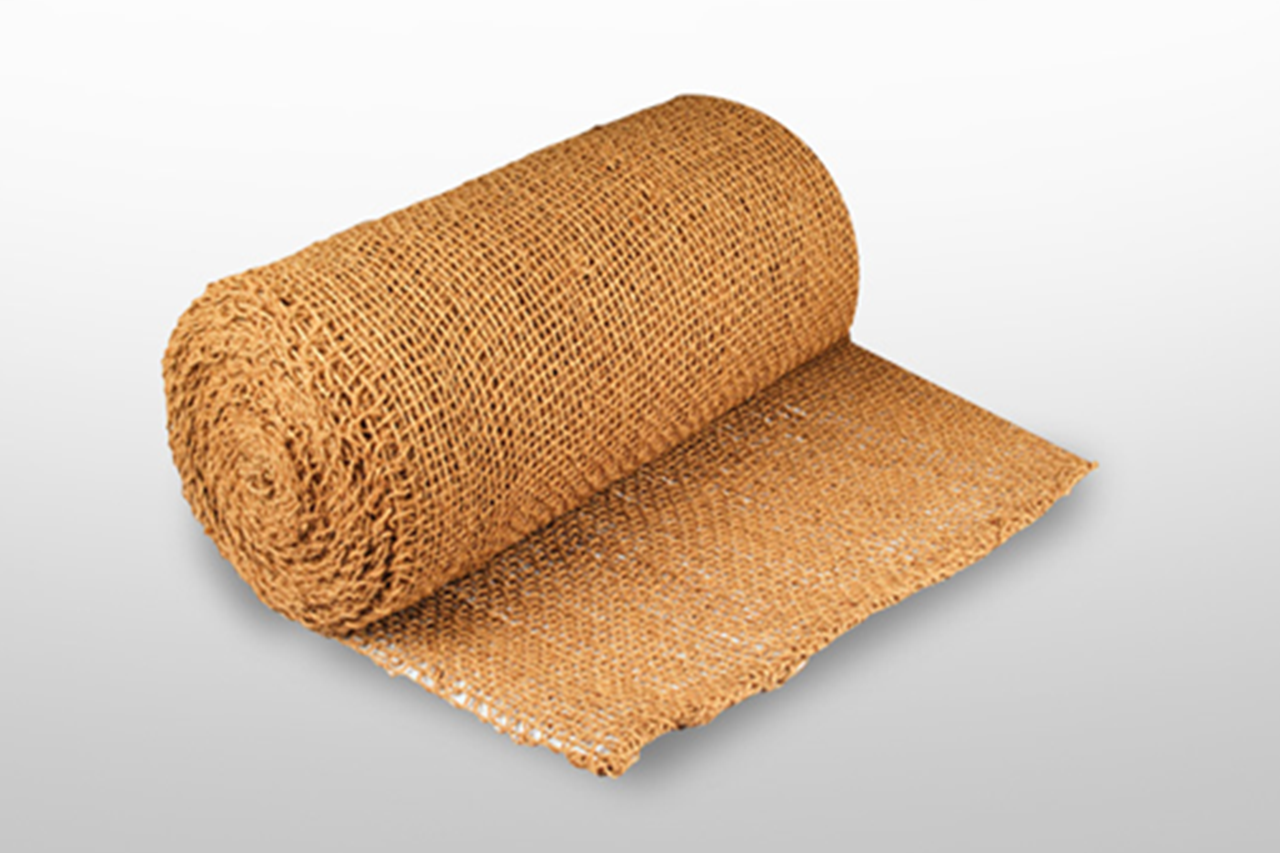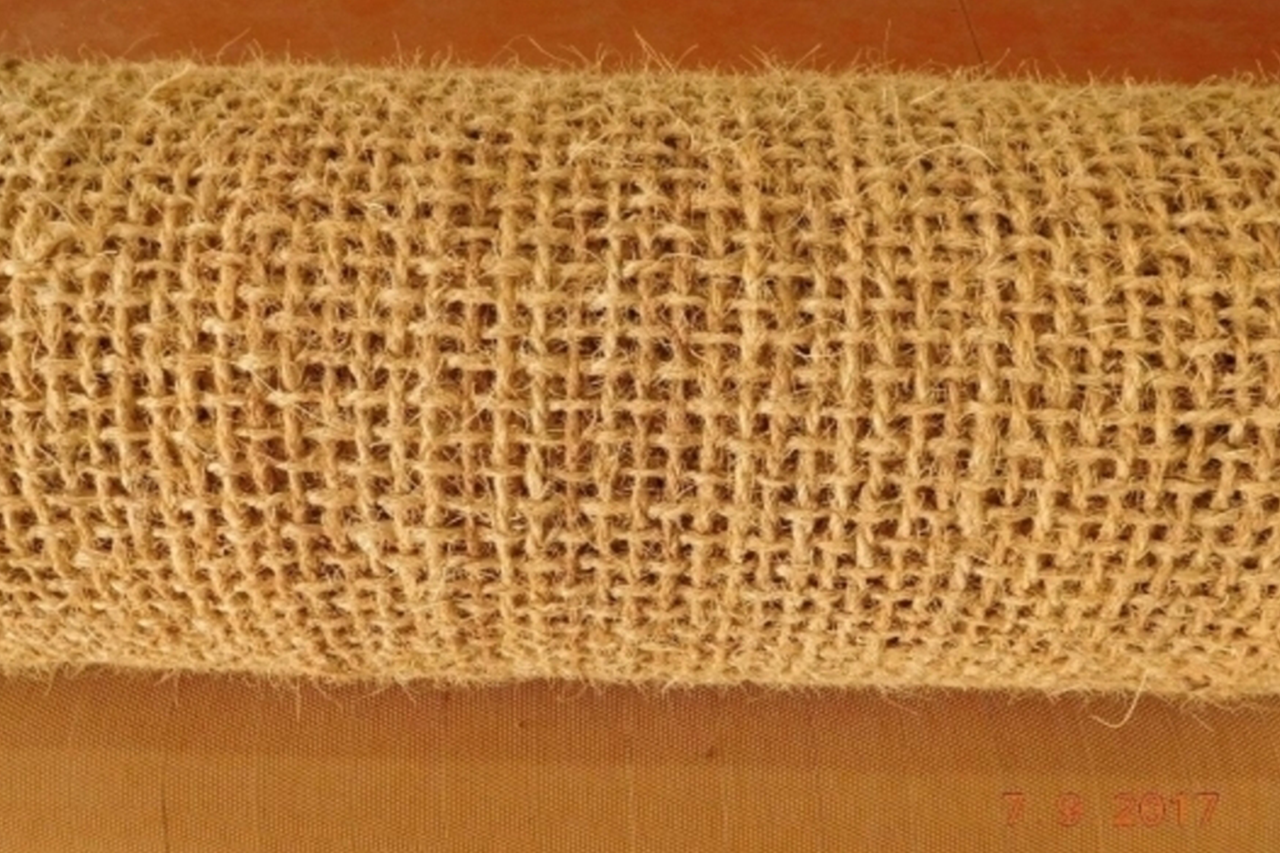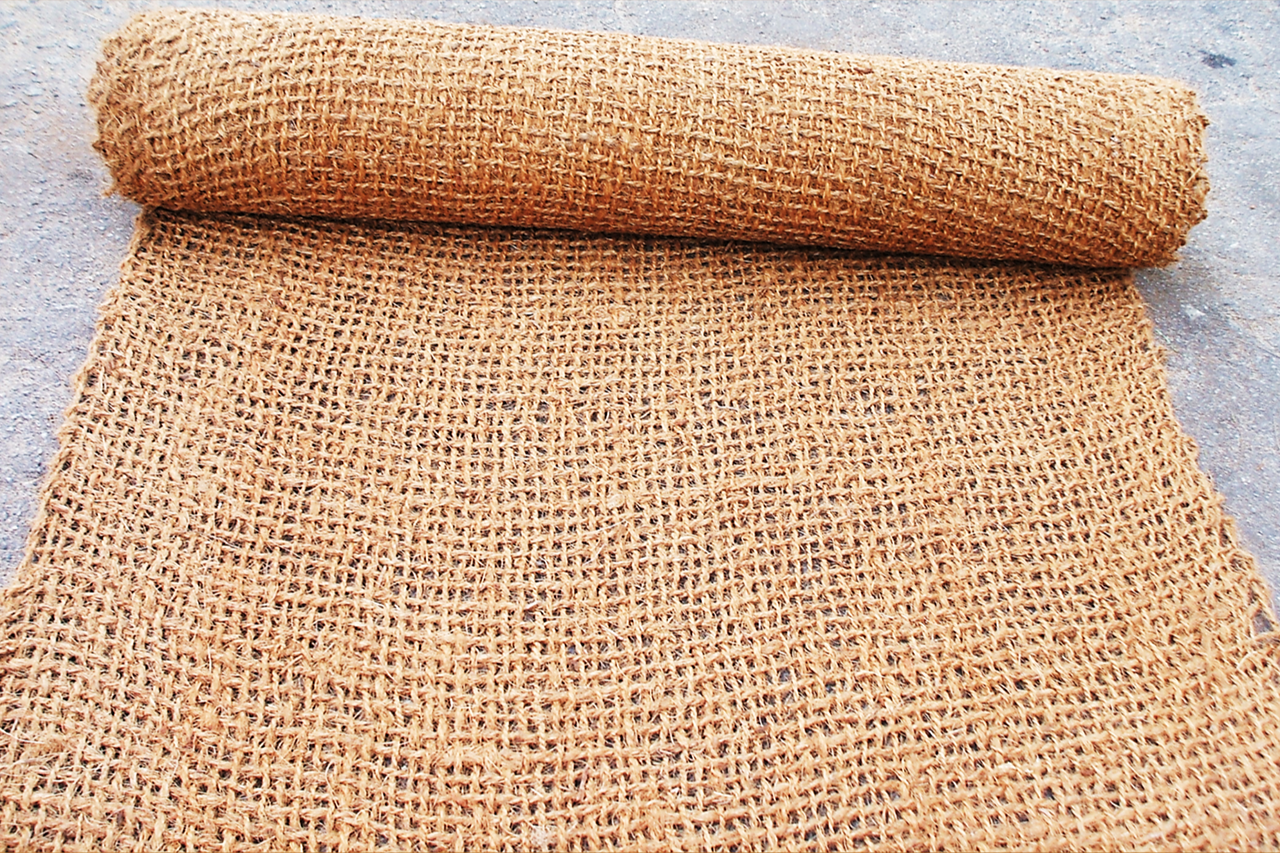Coir geotextile is a type of geosynthetic material made from coconut fibers extracted from the husk of coconuts. It is used extensively in civil engineering, construction, landscaping, and environmental restoration projects for various purposes, including soil erosion control, slope stabilization, sediment control, and vegetation establishment.
Here are some of the advantages of coir geotextile:
1. Biodegradability : Coir geotextile is an environmentally friendly option compared to synthetic geotextiles. Made from natural coconut fibers, it is biodegradable and decomposes over time, leaving behind minimal environmental impact. As it breaks down, coir geotextile adds organic matter to the soil, enriching it and supporting plant growth.
2. Erosion Control : Coir geotextile is highly effective in preventing soil erosion. When placed on slopes, riverbanks, or other erosion-prone areas, it forms a protective barrier that helps retain soil particles while allowing water to flow through. By stabilizing the soil and reducing surface runoff, coir geotextile helps prevent erosion and promotes the establishment of vegetation.
3. Flexibility and Conformity : Coir geotextile is flexible and conformable, allowing it to adapt to the contours of the terrain and irregular surfaces. It can be easily installed in various configurations, including blankets, mats, or rolls, to suit the specific requirements of the site and the project.
4. Water Retention and Drainage : Coir geotextile has excellent water retention properties, which help maintain soil moisture levels and support plant growth. At the same time, it also allows excess water to drain away, preventing waterlogging and ensuring proper aeration of the soil.
5. Biological Compatibility : Coir geotextile is compatible with natural ecosystems and supports the establishment of vegetation. Its fibrous structure provides an ideal substrate for seeds to germinate and roots to anchor, promoting the growth of native plants and vegetation. Over time, coir geotextile integrates with the surrounding environment, enhancing ecological resilience and biodiversity.
6. Cost-Effective : Coir geotextile is generally more affordable than synthetic alternatives such as polypropylene or polyester geotextiles. Its relatively low cost makes it an attractive option for erosion control and slope stabilization projects, especially in environmentally sensitive areas where natural solutions are preferred.
7. Ease of Installation and Maintenance : Coir geotextile is lightweight and easy to handle, making it simple to install even in challenging terrain. Once installed, it requires minimal maintenance, reducing ongoing labor and maintenance costs associated with erosion control measures.
Overall, coir geotextile offers a sustainable, cost-effective, and environmentally friendly solution for soil erosion control, slope stabilization, and habitat restoration projects. Its natural properties, versatility, and compatibility with natural ecosystems make it a valuable tool for engineers, landscapers, and environmentalists seeking to mitigate erosion and promote sustainable land management practices.



